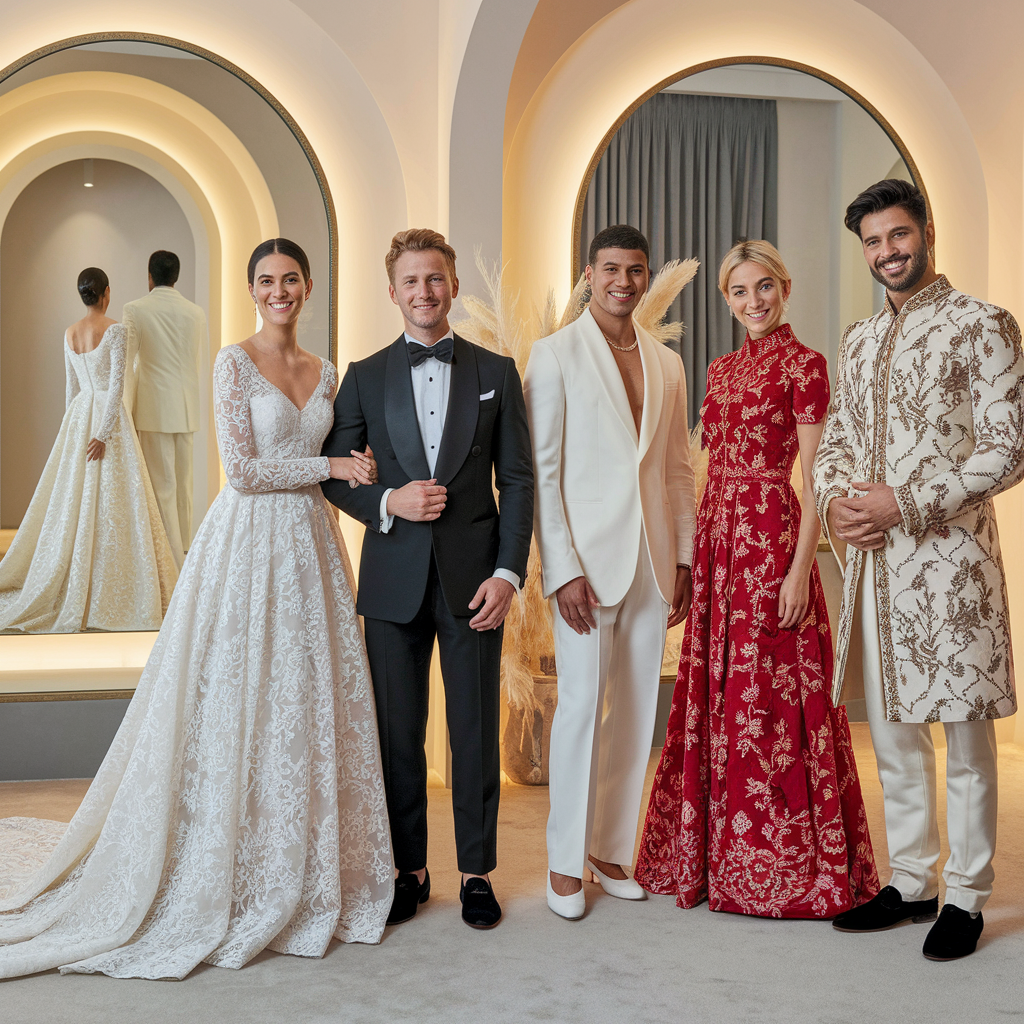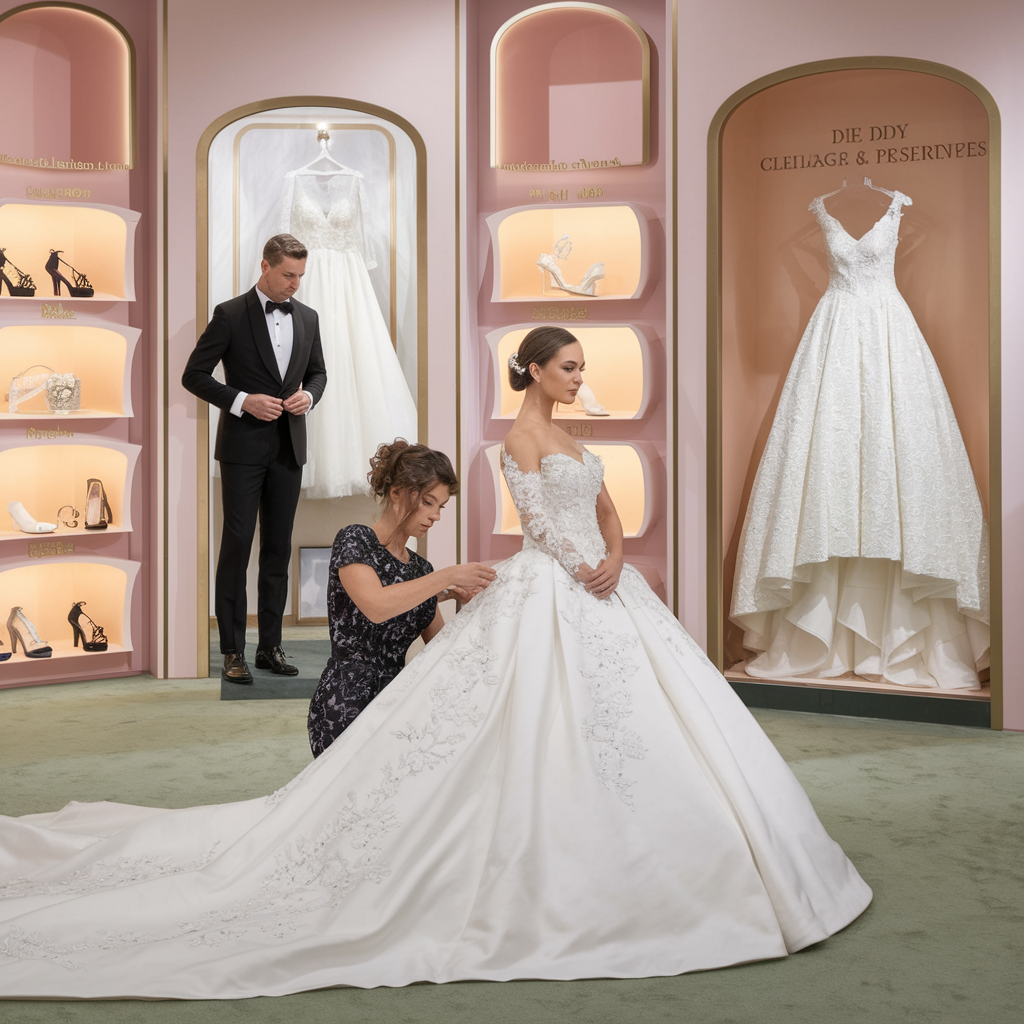For many couples, wedding attire is more than just a fashion statement—it’s a reflection of their culture, heritage, and traditions. Whether you’re wearing a beautifully embroidered lehenga, a tailored qipao, a regal kilt, or a stunning hanbok, selecting and ordering cultural wedding attire requires careful planning. Here’s what to keep in mind to ensure your outfit is perfect for your big day.
1. Understanding Cultural Traditions & Symbolism
Many traditional wedding garments carry deep cultural significance, from specific colors and fabrics to embroidery patterns and accessories. Understanding the traditions behind your attire can help you make meaningful choices.
👘 Japanese Kimono: Often feature elaborate patterns symbolizing happiness, longevity, and prosperity.
💃 Mexican Charro Suit & Folkloric Dresses: Celebrate heritage with intricate embroidery and vibrant colors.
👗 Chinese Qipao/Cheongsam: Red is traditionally worn to symbolize good luck and prosperity.
👰 Indian & South Asian Attire: Sarees, lehengas, and sherwanis often feature gold embroidery, signifying wealth and happiness.
🦁 Scottish Kilts: Represent family heritage, with each tartan pattern linked to a specific clan.
💡 Tip: Research your cultural attire’s history and significance so you can incorporate elements that feel personal and meaningful.
2. Where to Shop for Cultural Wedding Attire
Unlike standard wedding gowns or suits, cultural wedding attire is often sourced from specialty designers, international boutiques, or even family tailors in your home country. You may have several options for finding your perfect look:
🛍 Local Cultural Boutiques: Many major cities have specialty shops catering to specific cultures. Visiting in person allows you to try on options and customize your outfit.
🌍 International Designers: If you’re ordering from an artisan in another country, be mindful of shipping times and potential customs delays.
🧵 Custom Tailors: Many cultural outfits are custom-made, requiring measurements and multiple fittings.
🎭 Family Heirlooms: Some couples choose to wear or alter a family heirloom for a meaningful touch.
💡 Tip: If shopping internationally, research reputable designers and confirm their experience with wedding attire.
3. When to Order Your Cultural Wedding Attire
Since cultural wedding outfits are often handmade, require intricate detailing, and may come from international sources, ordering early is crucial.
📅 Recommended Timeline:
- Custom Cultural Attire: Order 6-12 months in advance, especially if purchasing from an international designer.
- Heirloom Alterations: Begin at least 4-6 months before the wedding to ensure proper adjustments.
- Off-the-Rack Cultural Attire: If buying locally, allow 3-6 months for any necessary alterations.
💡 Tip: Some cultural garments, like Indian bridal lehengas or embroidered gowns, may require hand-stitched embellishments that take months to complete—so plan accordingly!
4. Accessories & Additional Outfit Considerations
Cultural wedding attire often includes specific accessories, footwear, and jewelry that complete the look. These details may also take time to source or customize.
✔️ Jewelry & Headpieces: Maang tikkas (South Asian headpieces), floral crowns, or cultural hair ornaments.
✔️ Footwear: Mojaris (Indian), geta sandals (Japanese), or leather ghillie brogues (Scottish).
✔️ Veils & Scarves: Dupattas, mantillas, or other culturally significant coverings.
💡 Tip: If wearing multiple outfits (e.g., one for the ceremony and one for the reception), coordinate your timeline so all pieces arrive in time.
5. Fittings & Final Adjustments
Once your attire arrives, you may need alterations to ensure a perfect fit. Schedule fittings well in advance to allow for adjustments.
🔹 First Fitting: Ideally 2-3 months before the wedding to assess any major alterations.
🔹 Final Fitting: 2-4 weeks before the wedding for last-minute tweaks.
💡 Tip: If you’re getting married abroad and bringing your attire with you, store it carefully in a garment bag to avoid wrinkles or damage.
Final Thoughts
Your wedding attire is a beautiful way to honor your heritage and culture while celebrating your love. By planning ahead, researching your options, and working with skilled designers or tailors, you’ll ensure your outfit is both meaningful and stunning on your special day. No matter what you wear, your wedding look should reflect who you are and what matters most to you. Happy shopping! ✨💍


